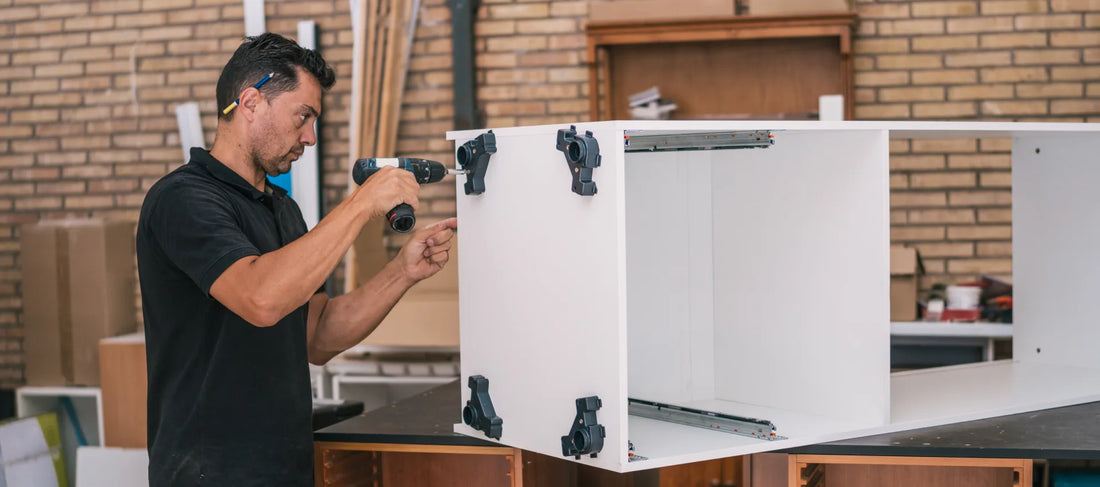
How to Refurbish Your Own Office Furniture for a Fresh Look
Share
Revive Your Office: A Guide to Refurbishing Furniture
Giving your office furniture a refresh can breathe new life into your workspace while being kind to your budget and the planet. Whether you're aiming to restore the charm of a solid wood desk or update the look of an upholstered chair, a little effort can significantly enhance your office's style and practicality.
We understand the importance of having quality office furniture that fits your financial needs. If you're considering revitalizing your current pieces instead of buying new, here’s a comprehensive guide to get you started.
Steps to Refurbish Office Furniture
1. Evaluate and Plan
Before you begin, take a close look at each piece of furniture to understand its condition. Pay attention to:
- Structural Integrity: Check for any instability like wobbly legs, broken components, or loose connections.
- Surface Condition: Note any scratches, dents, or areas where the finish is worn.
- Upholstery: For fabric-covered furniture, examine it for rips, stains, or fading.
Once you've assessed each item, create a plan outlining the specific refurbishment needed.
2. Gather Your Tools and Materials
The necessary supplies will depend on the type of furniture you're working with. Here’s a general list:
For Wood Furniture:
- Sandpaper in various grits
- Wood filler for repairs
- Wood stain or paint in your chosen color
- Protective clear sealant
- Application tools like brushes or spray guns
For Upholstered Furniture:
- New fabric that suits your aesthetic
- Staple gun and staples
- Sharp scissors
- Screwdriver or staple remover
3. Thoroughly Clean
A clean surface is crucial for successful restoration.
- For wood, use a microfiber cloth dampened with a gentle soap and water solution.
- For upholstery, start by vacuuming to remove loose debris, then treat any stains with appropriate fabric cleaners.
A clean surface will ensure better adhesion for any new finishes or materials.
4. Restore Wood Finishes
If you're working with wood furniture, follow these steps:
- Sand it Down: Begin with a coarser grit sandpaper to remove the old finish, then use progressively finer grits to achieve a smooth surface.
- Repair Imperfections: Fill any dents or scratches with wood filler, allow it to dry completely, and then sand it smooth.
- Apply New Color: Choose a wood stain or paint that complements your office décor and apply it evenly. Allow each coat to dry fully before applying the next.
- Protect Your Work: Finish with a clear sealant to protect the new finish and increase its longevity.
5. Update Upholstery
For chairs and other upholstered items:
- Remove the Old: Carefully detach the existing fabric, paying attention to how it was originally secured. This can serve as a pattern for your new fabric.
- Cut the New Material: Lay out your new fabric and cut it to the necessary size, leaving extra around the edges for stapling.
- Secure the New Fabric: Stretch the new fabric tightly and staple it securely to the furniture frame, ensuring a smooth, wrinkle-free finish.
6. Final Inspection and Arrangement
Once the refurbishment is complete:
- Look over each piece carefully for any missed spots or imperfections.
- Clean up any leftover materials and allow finishes to fully cure before use.
- Arrange your newly revitalized furniture to enhance the flow and appearance of your office.
Embrace Sustainable Office Practices
Refurbishing your office furniture is more than just a way to save money – it’s a responsible choice that minimizes waste and supports a more sustainable approach to office outfitting. By giving your existing furniture a new lease on life, you're contributing to a greener environment.
In Conclusion
Refurbishing your office furniture offers a practical and environmentally conscious way to refresh your workspace. Whether you're sanding and staining wood or reupholstering chairs, this hands-on approach extends the life of your furniture and enhances your office environment.



